Did you know there are numerous sand dunes in Saskatchewan?
Despite people assuming Saskatchewan is all grain fields (we’re 51% forest too, by the way), we have 4 active sand dunes that you can visit.
While some are easier to access than others, they’re all incredible and a great spot to appreciate nature, explore with the family and snap some cool photos.
READ MORE: 6 Non-Essential Hiking Gear Items to Take With You (Because Comfort Matters)
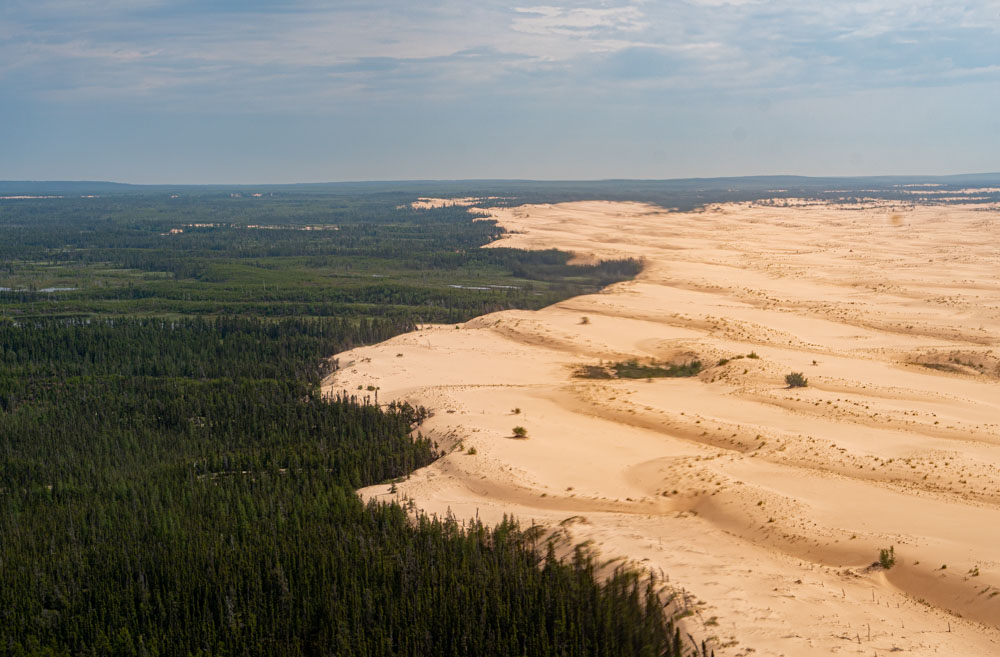
How are the Sand Dunes in Saskatchewan Formed?
The sand dunes found in Saskatchewan are remnants of the last ice age nearly 12,000 years ago. The Laurentide Ice Sheet covered nearly all of Canada. When it melted, it left behind massive lakes that covered much of Saskatchewan as well as large amounts of sand. Over the millennia, the sand has moved with the flowing of rivers and been weathered by wind, leaving behind deposits in the form of sand dunes.
Many of the dune locations in Saskatchewan are active, meaning they are constantly being moved and reshaped by wind. There are also large sections of the dunes that have been stabilized by small plants, shrubs and trees – a common site in all the dune locations mentioned below.
READ MORE: The Best Glamping Locations in Saskatchewan
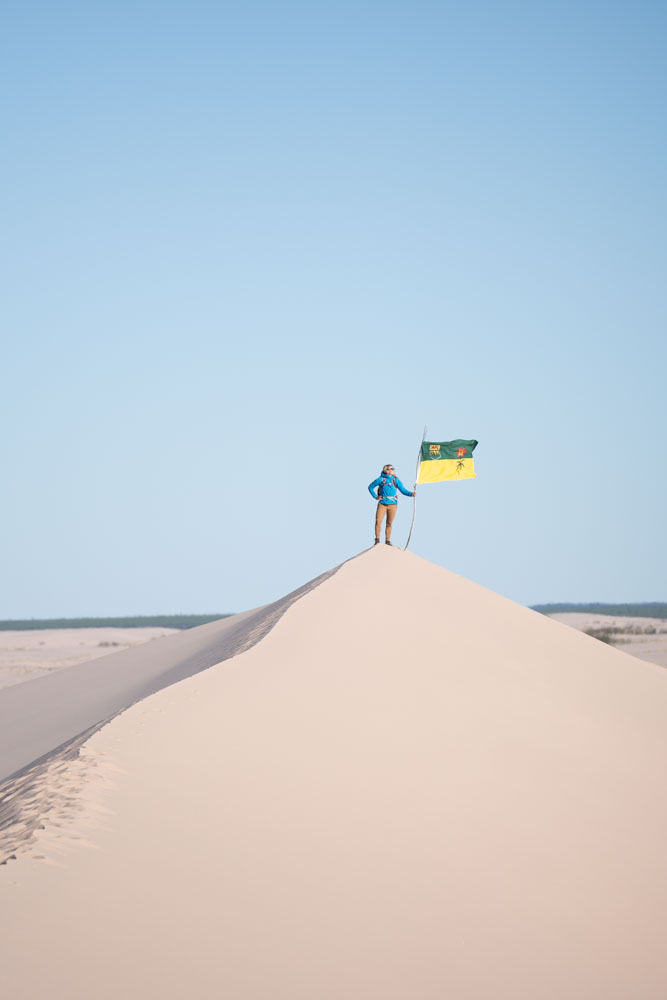
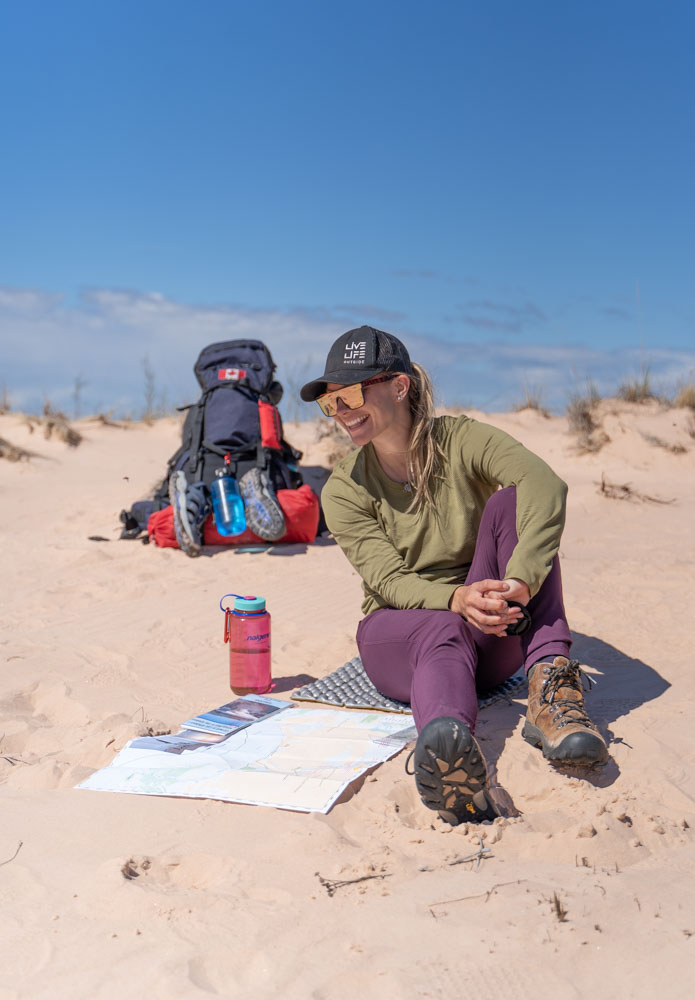
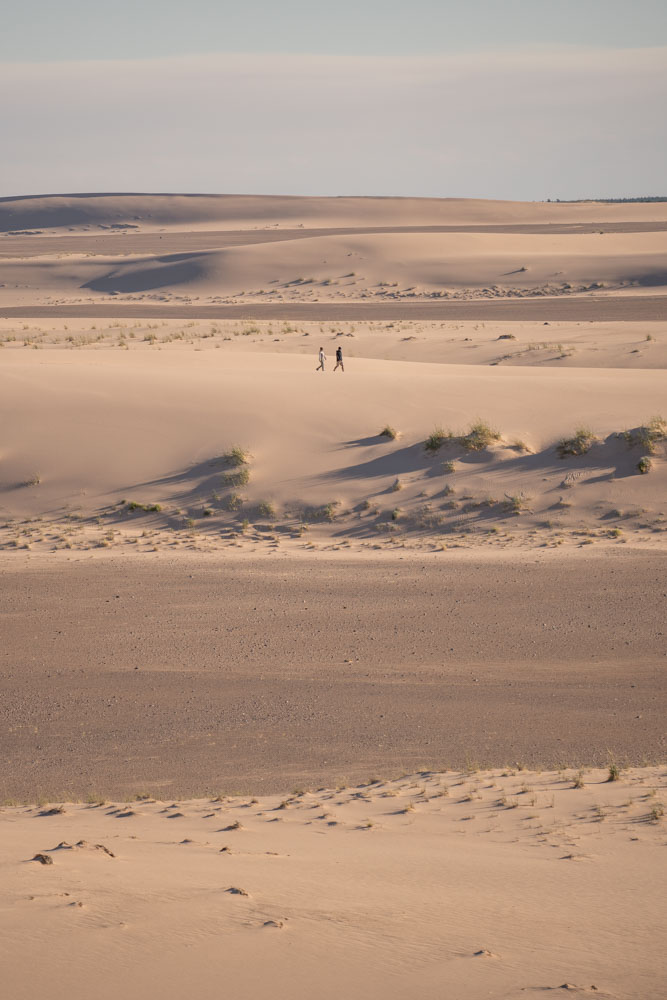
Where are the Sand Dunes in Saskatchewan?
The sand dunes in Saskatchewan are found in nearly every corner of the province, from the far northwest, southwest, central and eastern edge.
Here’s a complete guide on where and how to visit each sand dune in Saskatchewan.
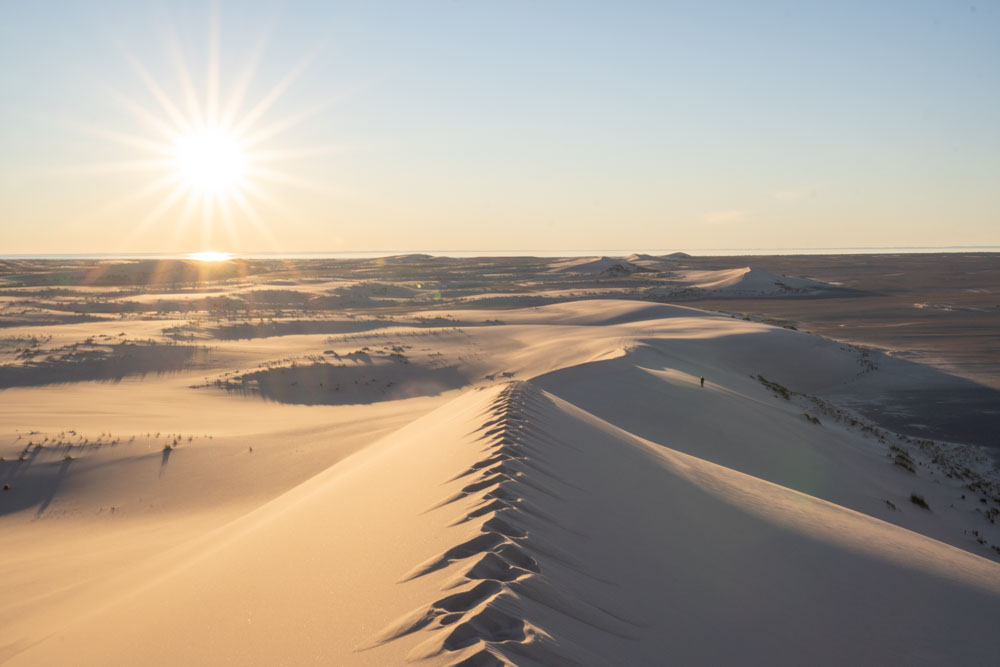
1. The Athabasca Sand Dunes
The most well-known but hardest-to-reach sand dunes in Saskatchewan are the Athabasca Sand Dunes in Athabasca Sand Dunes Provincial Wilderness Park. This destination has been on my bucket list for years until I was finally able to visit them in 2022.
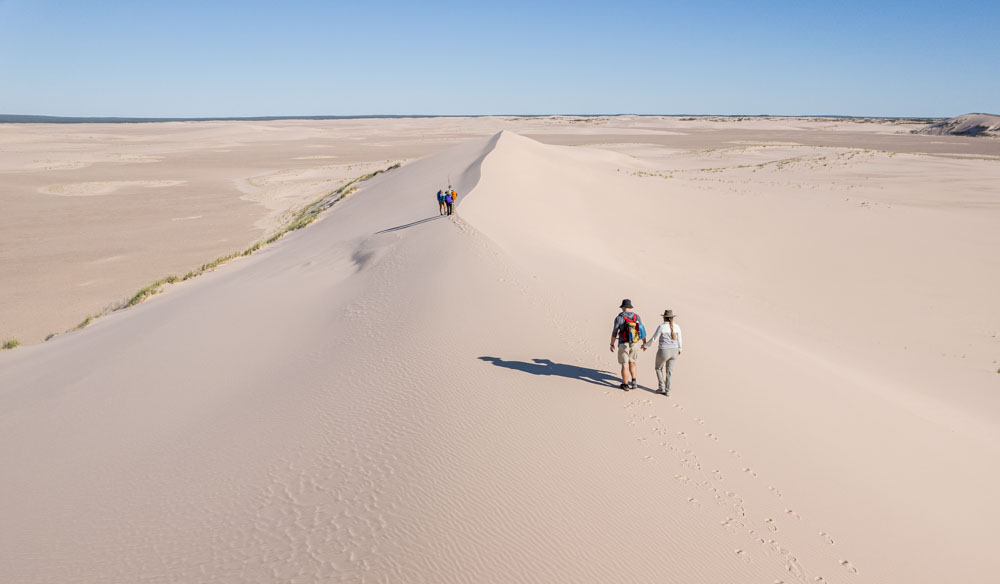

The Athabasca Sand Dunes are located in northwest Saskatchewan. They cover about 2000 square kilometres south of Lake Athabasca and are considered the most northern dunes in the world.
When the last glacier receded about 10,000 years ago, the low-lying plains in this region were exposed to winds which created ridges of dunes that are seen today. The two largest active fields are the Thomson Bay and William Dunes but there are dunes around Cantara Bay, the Archibald River, the MacFarlane River and 7 other locations.
The most impressive and dramatic dunes are the linear dunes west of the William River. While the dune field isn’t a dry-dune desert but a moist dune, these dunes make you feel like you’re in the Sahara or Namib desert. They rise upwards of 35 metres in elevation and can be 1.5 kilometres long.
READ MORE: The Best Backcountry Hikes in Saskatchewan
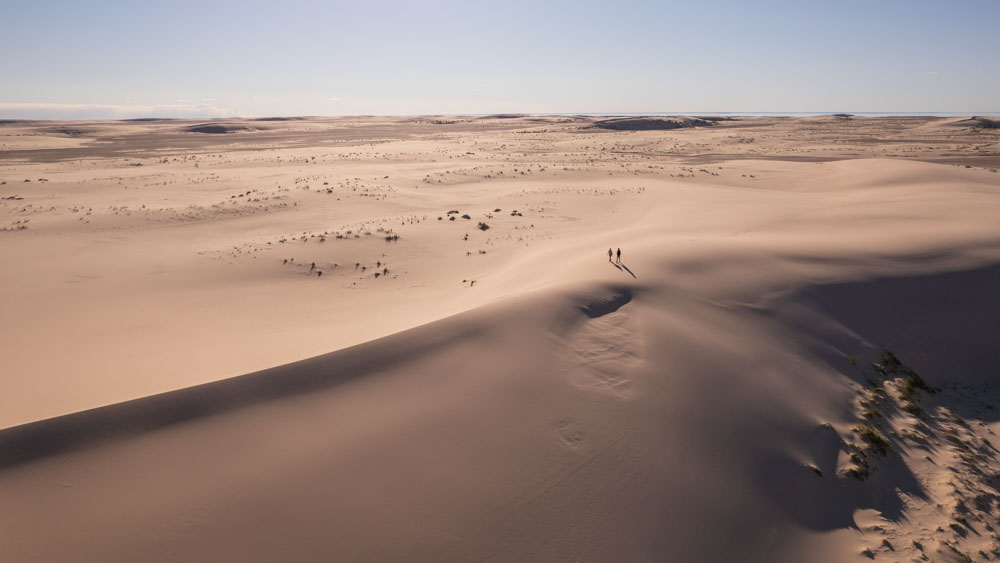
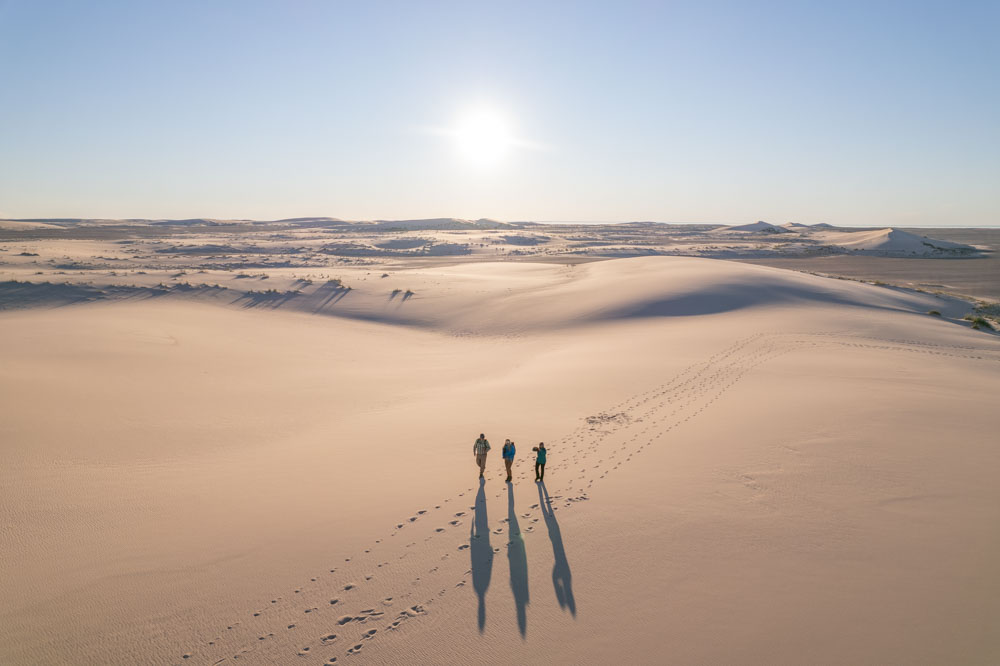
How to Get to the Athabasca Sand Dunes
It’s not easy or cheap to reach the Athabasca Sand Dunes. In fact, these are the most difficult sand dunes in Saskatchewan to get to. You have to boat or float plane into the southern shore of Lake Athabasca. Access communities include Fort MacMurray, Stony Rapids and Fond du Lac. For those with whitewater canoeing experience, the dunes can also be reached from the William River and the MacFarlane River.
The trip can cost upwards of $15,000 for 5-6 people due to the high expense (and seat limitations) of float planes. While I was able to plan my own unsupported trip to the dunes, Churchill River Canoe Outfitters offers guided tours for about $5,000, excluding return flights to Stony Rapids.
This is a true backcountry location. There are no amenities and no cell service in the area.
READ MORE: A Guide to the Best Hidden Gems in Southwest Saskatchewan

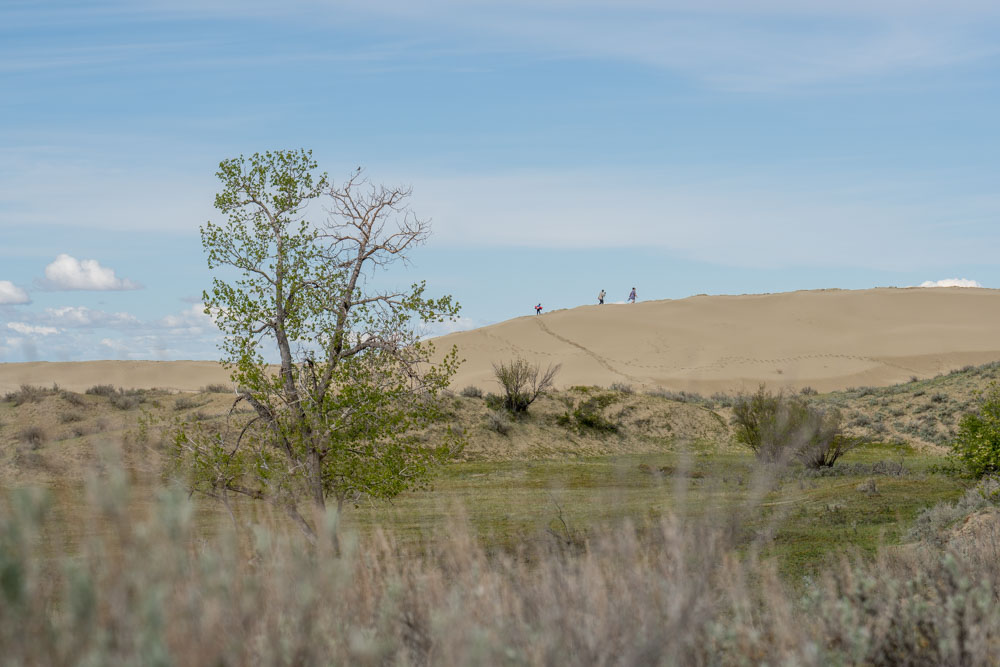
2. The Great Sand Hills
One of the most impressive sand dunes to visit in Saskatchewan that are easily accessible is The Great Sand Hills in the southwest of the province. This 1900-square-kilometre area of active dunes exists in striking contrast to the pastureland and fields of the south.
Located in the Great Sandhills Ecological Reserve, these dunes rise up 15 metres from the surrounding terrain. They are the second-largest dunes in Canada. (The Athabasca Sand Dunes being the first). They’re home to a variety of wildlife including mule deer, pronghorn, coyotes, and sharp-tailed grouse.
There is a sand dune close to the parking lot but a larger set of dunes can be found about a 10-minute or 1.1-kilometre walk beyond the archway of old cowboy boots. There are several trails that lead out towards the dunes. They are formed from a combination of cattle that graze in the area and other visitors.
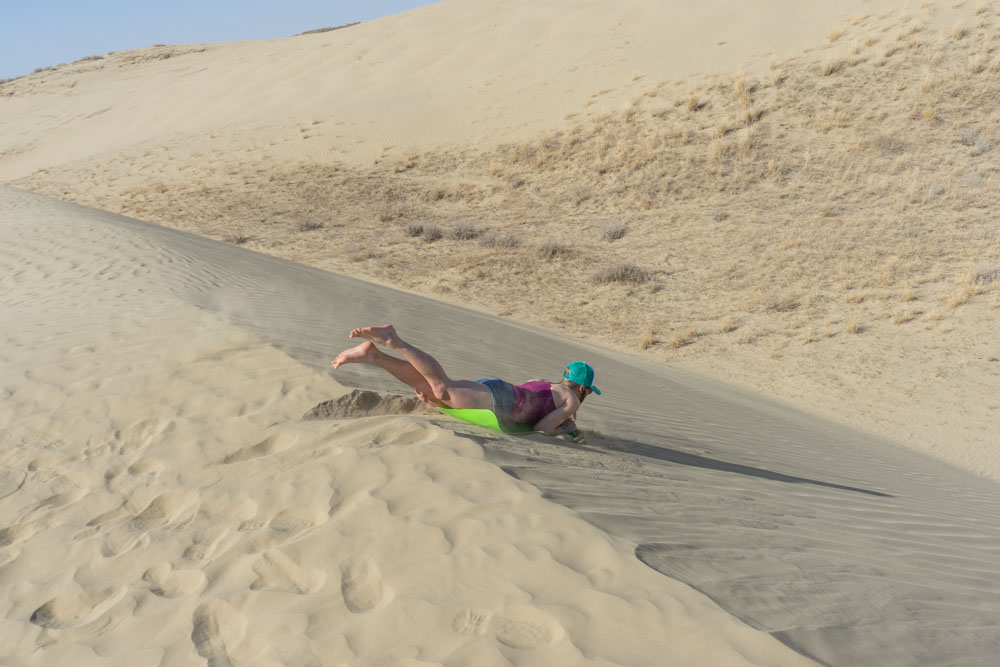
For a fun way to experience the dunes, pack a plastic crazy carpet or old snowboard and ride down the sand.
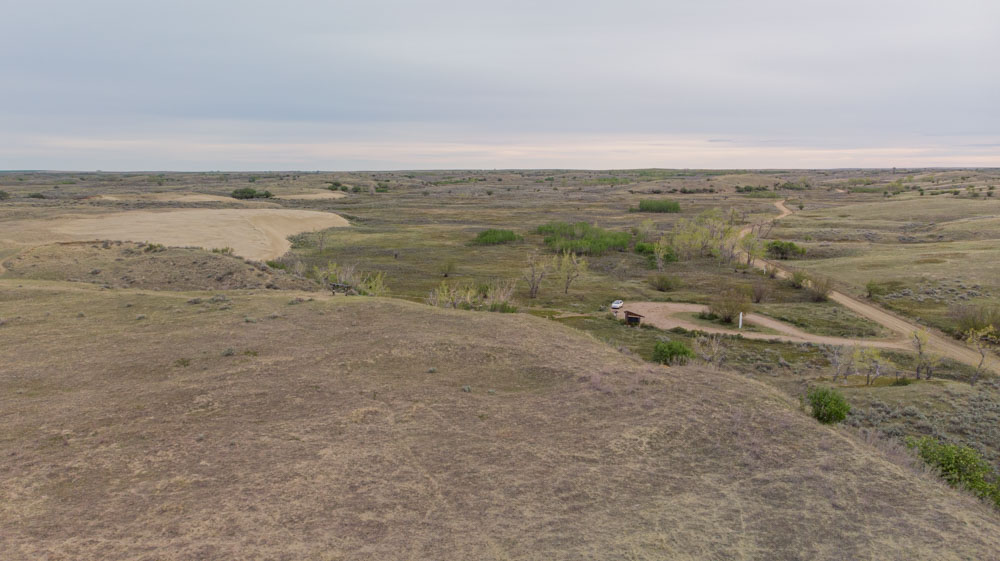
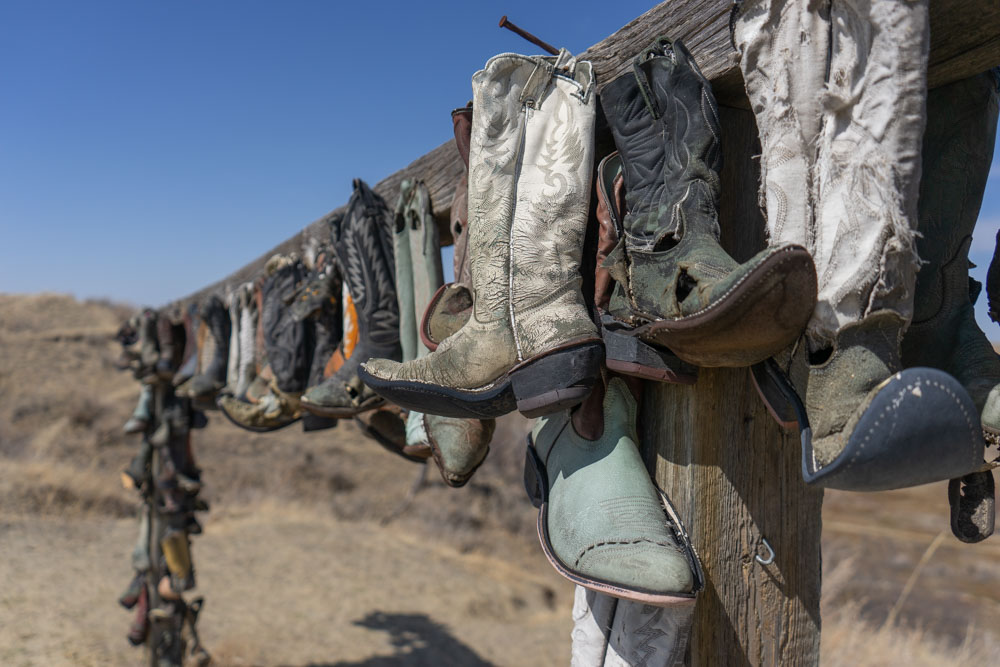
How to Get to the Great Sand Hills
The Great Sandhills are located 27 kilometres south of Sceptre on Highway 32. They are 160 kilometres northeast of Medicine Hat and 400 kilometres west of Regina. Signage to the Great Sand Hills is limited.
The drive south from Sceptre to the sand dunes is on nearly 10 kilometres of gravel which turns into softer sand the final kilometre or two. There is an on-site parking lot but no amenities and no washrooms. Overnight camping is not allowed in the ecological reserve. Cell service is limited.
READ MORE: Hiking the Rice River Canyon in Saskatchewan: Everything you Need to Know
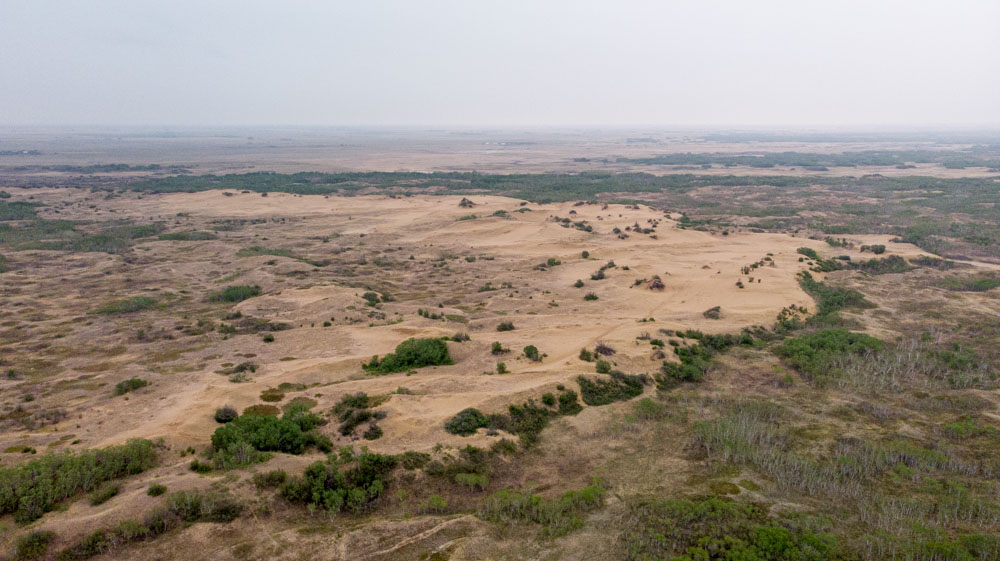
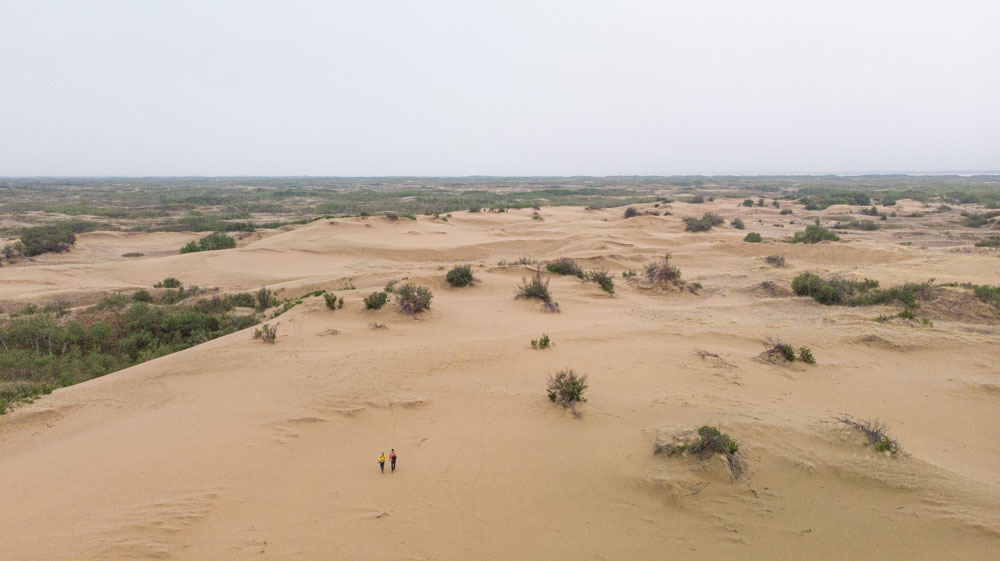
3. Douglas Sand Dunes
The Douglas Sand Dunes are located nearly equidistant from Regina and Saskatoon which makes them the quickest to access from a major urban centre. These dunes are also the remnants of a lake that covered the area during the last ice age.
There are several hiking routes to take to get to the dunes. The trails move through stabilized dunes covered in vegetation and brings you to the edge of the exposed dunes. Here you can see the exposed sand, trough blowouts and dune slip faces. The shortest route is out-and-back on the Dunes Trail at 5.7 kilometres return. To make a loop, add on the 4-kilometre Cacti Trail for different scenery on the way back. Keep an eye out for poison ivy on the edge of the trail.
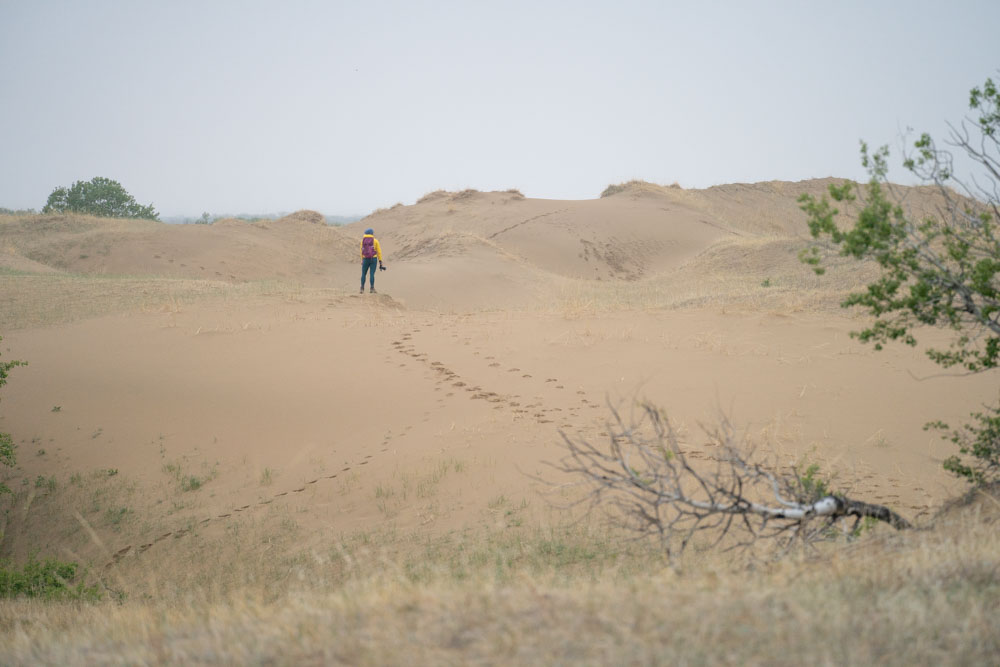
While wandering through the sand, make sure you are aware of your orientation. It’s easy to get turned around and wind can quickly cover your footprints in the sand.

How to Get to the Douglas Sand Dunes
The Douglas Sand Dunes are located in Douglas Provincial Park near Lake Diefenbaker. They are approximately an hour and a half drive from both Saskatoon and Regina. From Saskatoon, travel 146 kilometres south of Saskatoon on Highway SK-11S and SK-19 S. From Regina, it’s 176 kilometres northwest on Highway 1 and SK-42W.
The Dunes Nature Centre trails can be found northeast of the highway, opposite the park’s main entrance. The provincial park has all amenities including restroom facilities, campgrounds, running water and The Store by the Shore for all your lake-life needs (open in the summer season).
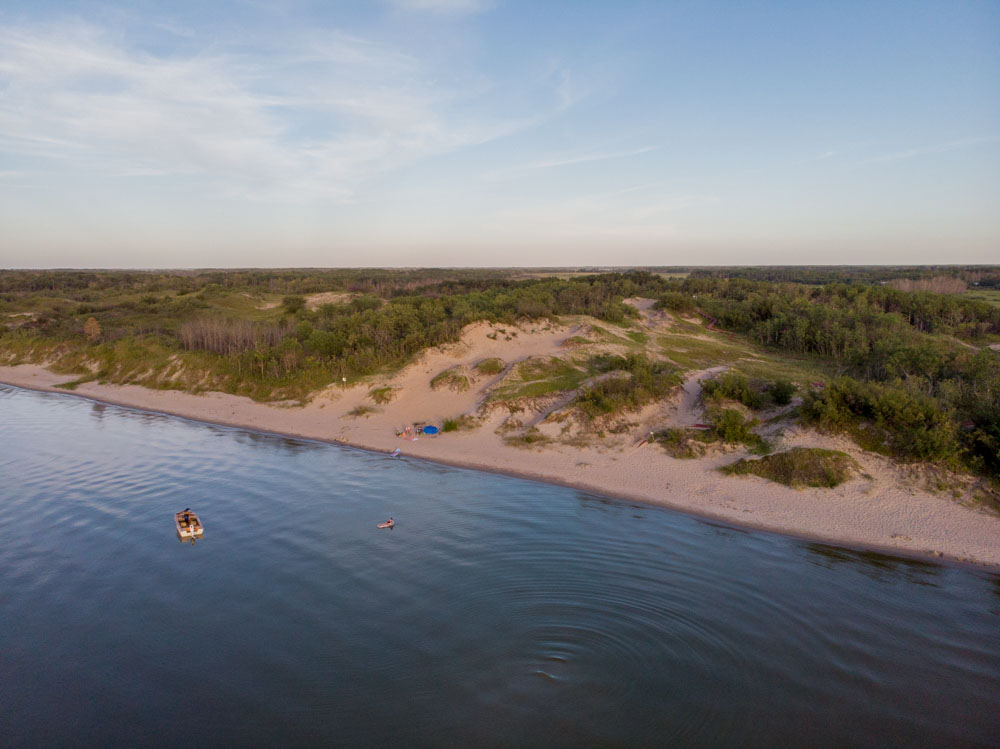

4. Good Spirit Lake Sand Dunes
Due to the retreat of the last glacier, meltwater pooled up and formed Glacial Lake Saltcoats. Good Spirit Lake is located on what was the western edge of this prehistoric lake. Coarse sand was deposited on a beach or river delta. Over time, prevailing north winds piled the sand into dunes.
Today, the Good Spirit sand dunes are as high as a five-story building. It’s an easy 1.8-kilometre walk one-way from the main beach along the shoreline of the lake in Good Spirit Lake Provincial Park. There are benches along the way and the trail is wheelchair accessible up until the water control structure. At the end of the trail, there is a boardwalk to follow through the dunes. It’s best to stay on trail here due to the presence of poison ivy. The boardwalk leads up to a lookout point with panoramic views over Good Spirit Lake.
On the short hike out, keep an eye on the shoreline for purple sand. This lovely shade of sand is due to the mineral garnet weathering down into fine particles and can be found on several of Saskatchewan’s beaches.
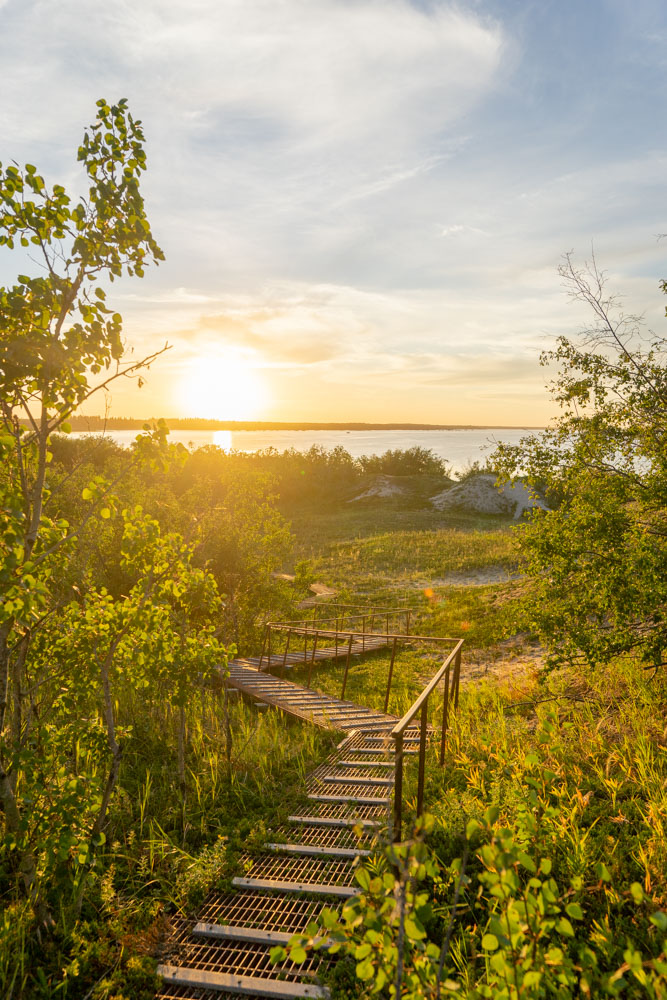
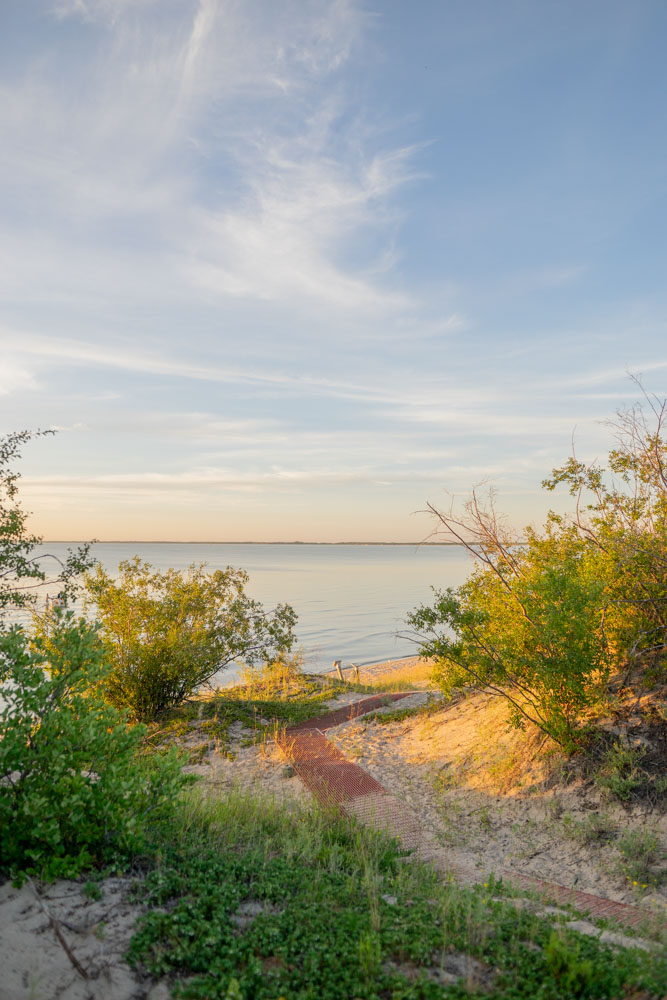

How to Get to the Good Spirit Dunes
Good Spirit Lake Provincial Park is located 50 kilometres northwest of Yorkton and 220 kilometres northeast of Regina.
The dunes are located on the southeast corner of the lake. There is hike-in-only access from the main beach area of the provincial park.
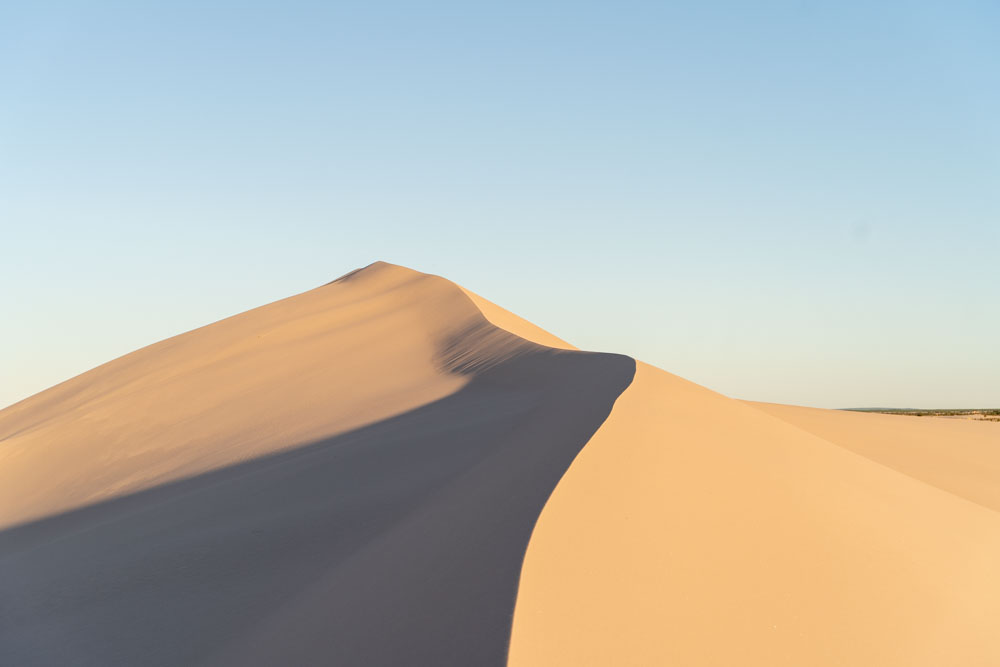
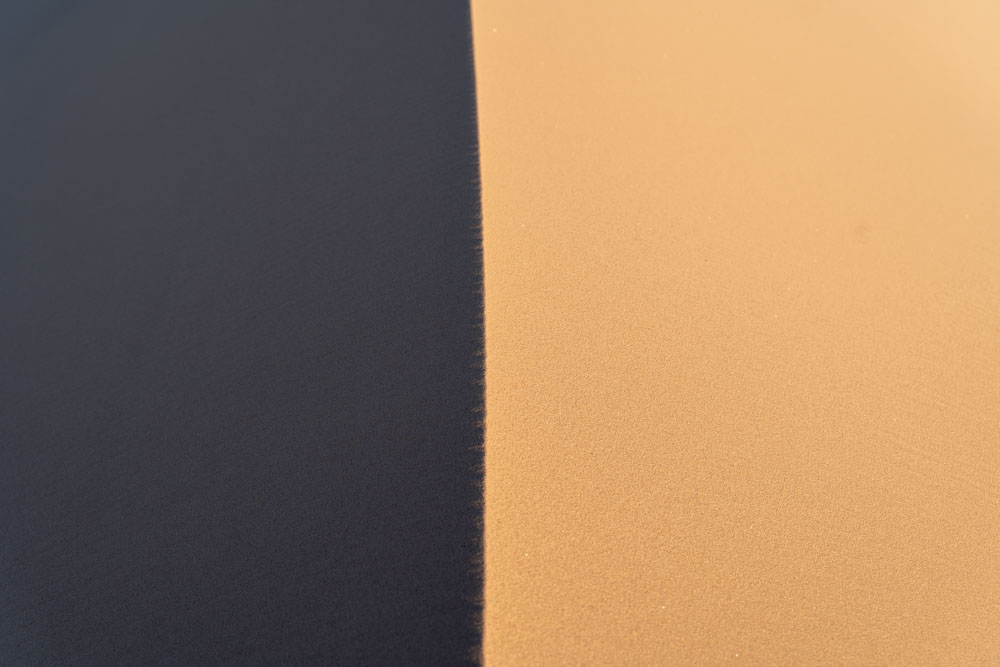
Save This Post to Pinterest





Good article
I sure hope they never build a freeway to the Athabasca Sand Dunes. The only way to preserve it is by limiting the number of people that can even get there.